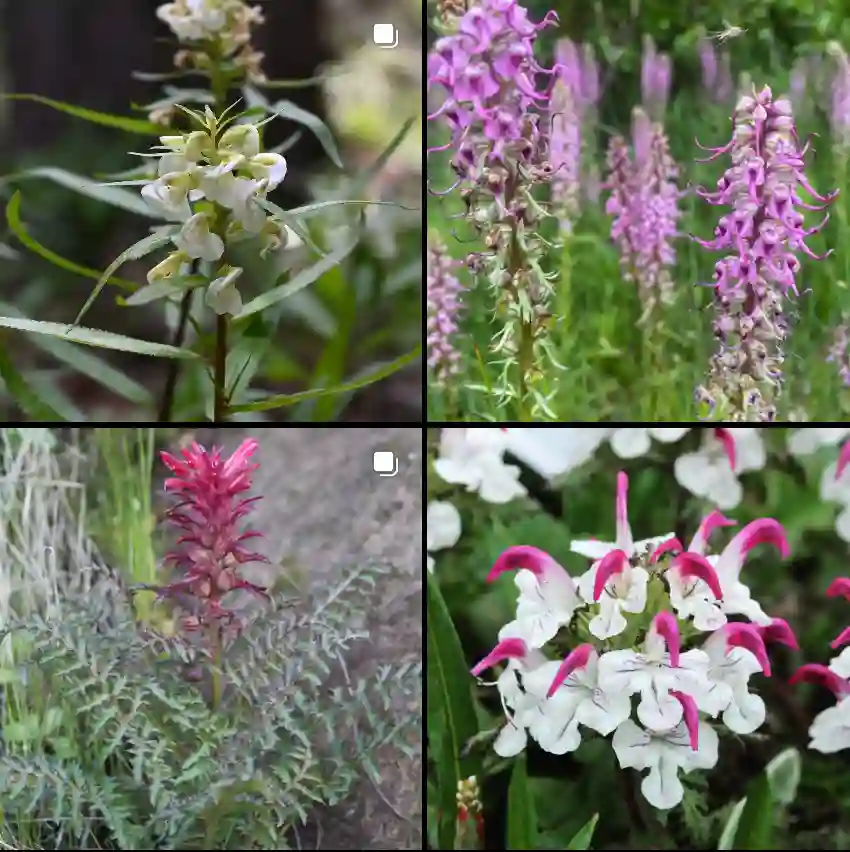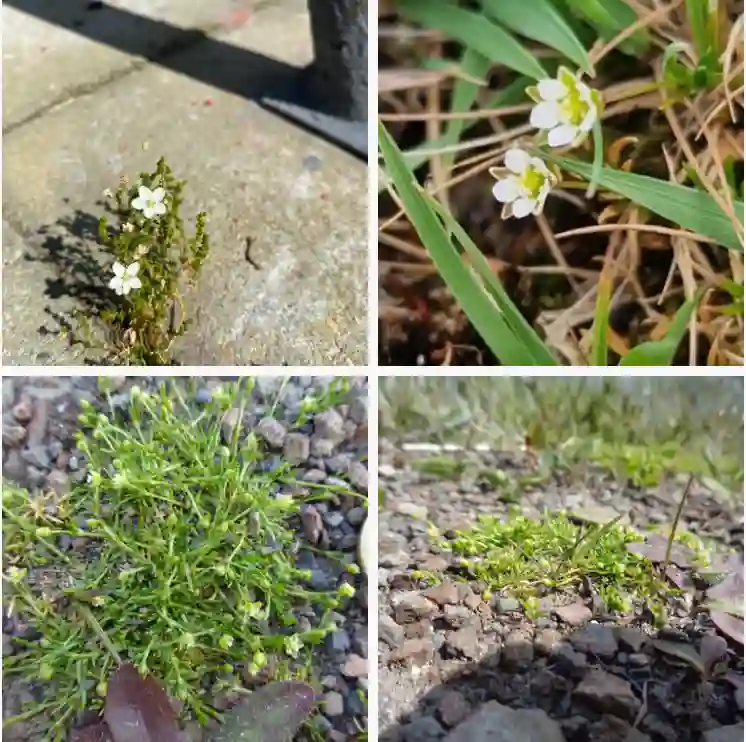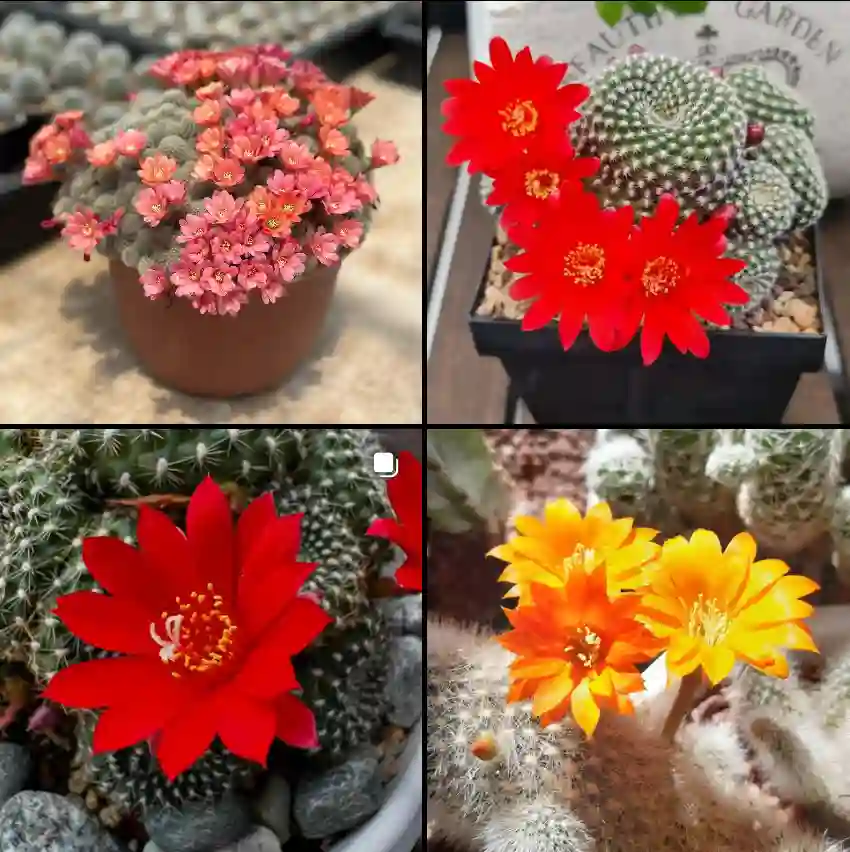Begonia ‘Frosty’, often known as ‘Angel Wing Frosty Begonia’, is a captivating hybrid celebrated for its unique and angelic appearance. This exquisite cane-stemmed Begonia boasts asymmetrical, deeply lobed or angel-wing shaped leaves that are a soft green, beautifully splashed and edged with shimmering silvery markings, giving it a “frosted” or icy appearance. This ethereal quality, combined with delicate light pink or white flowers, makes ‘Frosty’ a truly enchanting addition to indoor plant collections, hanging baskets, and shaded outdoor displays. Its quiet elegance and striking foliage provide a calming yet eye-catching presence, distinguishing it from more overtly vibrant Begonias.
Unveiling the Silvered Grace: Characteristics of Begonia ‘Frosty’
‘Begonia Frosty’ is a cultivar within the cane Begonia group, a classification that includes many popular Angel Wing Begonias. These types are known for their upright, sturdy stems and highly ornamental foliage. While its precise hybrid origin isn’t always widely detailed, its characteristics indicate careful breeding to enhance its unique silvery variegation.
Key Characteristics of Begonia ‘Frosty’:
- Ethereal Silvered Foliage: The most distinctive feature is its green leaves adorned with striking silvery or whitish markings, often concentrated along the edges and veins, giving it a frosted or misted appearance. The leaves are typically broad, asymmetrical, and may have a subtle curl or ruffle.
- Angel-Wing Shape: The leaves typically exhibit the characteristic asymmetrical “angel wing” shape, common to cane Begonias.
- Delicate Flowers: It produces charming clusters of small, light pink or white flowers. While the foliage is the main draw, these subtle blooms add an understated elegance.
- Upright, Cane-like Stems: Develops sturdy, upright stems that resemble bamboo, contributing to its graceful, often bushy, form. It typically grows 10−14 inches (25−35 cm) tall and wide.
- Fibrous Roots: Like other cane Begonias, it possesses a fibrous root system. It is generally grown as a tender perennial, requiring overwintering indoors in colder climates.
- Textural Appeal: The velvety texture of its leaves, combined with the silvery overlay, creates a luminous quality that makes it appear to glow under indirect light.
Comprehensive Care Guide for Begonia ‘Frosty’
Successfully cultivating Begonia ‘Frosty’ requires providing consistent warmth, bright indirect light to maintain its unique variegation, and balanced moisture, mimicking its tropical origins.
1. Light Requirements
- Bright, Indirect Light is Essential: Begonia ‘Frosty’ thrives in bright, indirect light. This is crucial for both its overall health and for maintaining the striking silvery variegation on its leaves.
- Optimal Placement: Indoors, an east or north-facing window is ideal, providing gentle morning sun or consistent filtered light. If placed near a south or west-facing window, use sheer curtains or position the plant further back to diffuse intense midday and afternoon sun, which can easily scorch its delicate foliage and dull its unique coloration.
- Foliage Coloration: Adequate bright, indirect light is paramount for its unique silvered pattern to be pronounced. In insufficient light, the variegation may fade, becoming more uniformly green, and the plant can develop leggy, stretched growth.
- Airflow: Ensure good air circulation around the plant, especially in humid conditions, to help prevent fungal issues.
2. Watering
- Consistently Moist, Never Soggy: ‘Frosty’ prefers consistently moist soil but is highly susceptible to root rot if the soil remains waterlogged. Finding this balance is key.
- Check Before Watering: Water when the top 1 inch (2.5 cm) of the soil feels dry to the touch. The frequency will depend on factors like temperature, light intensity, pot size, and ambient humidity.
- Thorough Soaking and Drainage: When watering, do so thoroughly until water drains from the bottom of the pot. Always use containers with excellent drainage holes and promptly empty any excess water from saucers.
- Avoid Wetting Foliage: It is crucial to water at the soil level to keep the leaves dry. Water sitting on the velvety, textured foliage, especially in humid conditions, can easily lead to bacterial leaf spots, browning, or fungal issues like powdery mildew.
- Drought Tolerance (Short Periods): While it prefers consistent moisture, short periods of dryness are better than prolonged sogginess. Wilting leaves can indicate thirst, but also sometimes overwatering (due to root damage).
3. Soil and Potting
- Light, Fluffy, and Fast-Draining Mix: Begonia ‘Frosty’ thrives in a light, well-draining potting mix that is rich in organic matter and provides good aeration for the roots. Its roots need air, not mud.
- Recommended Mix: A good quality commercial potting mix designed for tropical foliage plants or a mix of peat moss (or coco coir), perlite, and vermiculite will provide the ideal balance of moisture retention and rapid drainage.
- pH Preference: Generally prefers neutral to slightly acidic soil pH.
- Pot Selection: Choose pots with adequate drainage holes. Cane Begonias generally appreciate being slightly root-bound, so select a pot that is only slightly larger than its current root ball when repotting, typically every 1-2 years.
4. Temperature & Humidity
- Consistent Warm Temperatures: Begonia ‘Frosty’ thrives in consistent warm temperatures, ideally between 60∘F and 75∘F (15∘C to 24∘C). It is not frost-hardy and will suffer if temperatures dip below 55∘F (13∘C).
- Avoid Fluctuations and Drafts: Protect the plant from sudden temperature fluctuations and cold drafts from windows, doors, or air conditioning vents, as consistency is vital for its delicate nature.
- Moderate to High Humidity: This Begonia appreciates moderate to high humidity levels (ideally 50-60%). Higher levels will promote lusher growth and may help prevent crisping of leaf edges.
- Methods to Increase Humidity: Use a room humidifier, place the pot on a pebble tray filled with water (ensure the pot is not sitting in water), or group plants together to create a microclimate. As mentioned, avoid frequent misting directly on the leaves.
- Balance Humidity with Air Circulation: Good, gentle air circulation is important even in high humidity to prevent stagnant air, which can lead to fungal issues like powdery mildew.
5. Fertilization
- Regular, Gentle Feeding During Growing Season: To support its robust growth and continuous vigor, ‘Frosty’ benefits from regular, diluted fertilization during its active growing season (spring through fall).
- Recommended Regimen: Apply a balanced, water-soluble liquid fertilizer (e.g., NPK 10-10-10) every two to four weeks, diluted to half or quarter strength.
- Reduce in Dormancy: Reduce or cease fertilization entirely in late fall and winter when the plant’s growth naturally slows down. Avoid over-fertilizing, which can cause root burn.
6. Pruning and Maintenance
- Minimal Pruning: ‘Frosty’ is generally low-fuss but appreciates a little tender loving care.
- Remove Faded/Damaged Foliage: Promptly remove any faded, damaged, or yellowing leaves to maintain plant health and aesthetic appeal. This is crucial for preventing fungal issues.
- Pinching for Bushiness: Pinch back stems if the plant starts to stretch or look leggy. This encourages fullness and a more compact habit.
- Wipe Leaves: Gently wipe leaves with a soft, damp cloth occasionally to remove dust and show off their silvery sheen.
- Sterile Tools: Always use clean, sharp, sterilized tools for any pruning to prevent the introduction and spread of pathogens.
- Staking (Optional): As a cane Begonia, taller specimens might benefit from a subtle stake if they become top-heavy.
Propagation: Multiplying the Icy Beauty
Begonia ‘Frosty’ can be easily propagated through stem cuttings or leaf cuttings. This makes it a rewarding plant to multiply and share.
- Stem Cuttings (Reliable):
- Select Cuttings: Choose healthy stem sections that are about 4−6 inches (10−15 cm) long, with a few leaves, ideally in late spring or early summer.
- Preparation: Make a clean cut just below a leaf node. Remove any leaves from the bottom 1−2 inches (2.5−5 cm) that would be submerged in the rooting medium.
- Rooting Medium: Insert the cutting directly into a moist, well-draining rooting medium (e.g., sphagnum moss, perlite, or a light Begonia mix). Rooting hormone can be used to improve success rates. Cuttings can also be rooted in water, but transfer to soil once roots are 1−2 inches long for better establishment.
- Environment: Provide warm temperatures (68−75∘F or 20−24∘C) with bright, indirect light. High humidity (e.g., within a clear plastic bag or propagation dome) is beneficial for rooting.
- Rooting & Transplanting: Roots typically develop within a few weeks. Once well-rooted and new growth appears, the new plant can be carefully transplanted into a larger pot with its preferred substrate.
- Leaf Cuttings (Effective for Rex and Cane types):
- Method: Cut a healthy leaf from the parent plant. You can insert the petiole (leaf stem) into a moist rooting medium, or cut the leaf into sections containing major veins and lay them flat on the surface of the medium.
- Environment: Provide warmth and high humidity. New plantlets will emerge from the cut veins.
Overwintering Begonia ‘Frosty’
As a tender perennial, Begonia ‘Frosty’ is not frost-hardy and is typically grown as an annual in climates with freezing winters (below USDA Hardiness Zone 10-11). However, it can be successfully overwintered indoors.
- Bring Indoors Before Frost: Before the first hard frost or when nighttime temperatures consistently drop below 50∘F (10∘C), bring potted plants indoors.
- Indoor Care: Place the plant in a bright location with indirect light. Reduce watering frequency, allowing the top couple of inches of soil to dry out almost completely between waterings. Growth will slow significantly, and flowering may cease. Maintain good air circulation around the plant. It may experience some leaf drop upon moving indoors due to environmental shock.
- Taking Cuttings: A highly reliable method for ensuring future plants is to take stem cuttings in late summer or early fall and root them indoors. These younger plants are often easier to maintain over winter and will perform vigorously the following spring.
Common Pests and Diseases
‘Frosty’ is generally easygoing, but like all Begonias, it can face some common challenges, especially if cultural conditions are not optimal.
- Pests:
- Mealybugs, Spider Mites, Aphids, Thrips, Whiteflies: Inspect plants regularly, particularly the undersides of leaves and new growth. Treat with insecticidal soap or neem oil at the first sign of infestation. Good air circulation can help deter some pests.
- Slugs and Snails: Can be an issue for outdoor plants in moist conditions.
- Diseases:
- Root Rot / Stem Rot: The most common problem, almost always due to overwatering or poorly draining substrate. Leads to wilting, yellowing leaves, and mushy stems. Ensure excellent drainage and allow soil to dry slightly between waterings.
- Powdery Mildew: White, powdery spots on leaves and stems. Favored by high humidity with poor air circulation and cool temperatures. Improve airflow, avoid overhead watering. Avoid composting infected plants.
- Botrytis Blight (Gray Mold): Fuzzy gray or brownish patches, often on decaying plant matter or in damp, cool, crowded conditions. Remove affected parts immediately and improve ventilation.
- Bacterial Leaf Spot: Dark, water-soaked spots on leaves, often due to water sitting on foliage. Avoid overhead watering.
- Leaf Browning/Crisping: Can be caused by underwatering or insufficient humidity.
- Leaf Drop: Often due to environmental shock (e.g., moving indoors), inconsistent watering, or low light levels.
- Leggy Growth: Due to insufficient light.
Prevention is Key: Optimal watering practices, ensuring good air circulation, using appropriate well-draining soil, and regular inspection are the best defenses against most problems. Promptly address any issues to prevent them from spreading.
Design Ideas and Companion Plants for Begonia ‘Frosty’
The cool elegance and unique silvered foliage of ‘Frosty’ make it a beautiful addition to various indoor and shaded outdoor displays, particularly where a calming or modern aesthetic is desired.
- Indoor Specimen Plant: Its unique, silvery leaves make it a stunning standalone houseplant for shelves, side tables, or plant stands, adding a touch of winter magic year-round. It’s a great fit for peaceful spaces or modern plant displays.
- Mixed Containers (Shaded Patio): Combine with other shade-loving plants in patio containers. Its upright habit can serve as a “filler” or “thriller,” complemented by lower-growing or trailing plants.
- Terrariums/Plant Cabinets: Its appreciation for moderate to high humidity and indirect light makes it a suitable candidate for larger terrariums or plant cabinets, where environmental conditions are controlled.
- Companion Plantings (Shade):
- Foliage Contrast: Pair with plants that offer contrasting leaf shapes or colors, such as fine-leafed ferns, dark green Hostas, or vibrant Caladiums (especially with white or pink hues) to enhance its cool tones. Coleus varieties with bold patterns can also create striking contrast.
- Floral Harmony: Delicate miniature Orchids or other small, shade-loving flowering plants can complement its subtle pink/white blooms. Impatiens and Fuchsias are classic shade companions.
- Textural Play: Integrate with mosses or other ground covers for a layered look.
Begonia ‘Frosty’ vs. Other Popular Begonia Types
Understanding where ‘Frosty’ fits within the diverse Begonia genus highlights its unique attributes, particularly its distinctive silvered foliage and Angel Wing lineage.
- Begonia ‘Frosty’ (Cane Begonia / Angel-Wing type):
- Key Differentiator: Silvery-white leaves with soft green undertones and frosted edges; broad, asymmetrical, slightly curled leaves with a velvety texture; delicate light pink/white flowers.
- Foliage: Highly ornamental, unique frosted/silvered appearance.
- Growth Habit: Upright, cane-stemmed, bushy.
- Root System: Fibrous.
- Light: Bright, indirect light.
- Humidity: Moderate to high (50-60%) is appreciated.
- Primary Use: Indoor specimen, patio containers, shaded outdoor containers, adding a cool, calming, modern feel.
- Begonia maculata (Angel Wing Begonia / Cane Begonia):
- Key Differentiator: Large, dark green leaves with bold, contrasting white or silver polka dots on the upper surface and reddish undersides.
- Foliage: Polka-dotted, distinctive “angel wing” shape.
- Growth Habit: Upright, cane-stemmed.
- Light: Bright, indirect light.
- Distinction from ‘Frosty’: ‘Maculata’ has distinct, larger polka dots versus ‘Frosty’s’ more general silvery splashes and frosted edges. ‘Frosty’ often appears more uniformly silver-green.
- Begonia ‘Sierra Gentle Rain’ (Cane Begonia / Angel-Wing type):
- Key Differentiator: Deeply lobed, olive-green leaves with distinctive silvery splashes; unique deep leaf indentations.
- Foliage: Highly ornamental, variegated, deeply textured.
- Light: Bright, indirect light to partial shade.
- Distinction from ‘Frosty’: ‘Sierra Gentle Rain’ is characterized by its deep lobing and overall “rain-spattered” effect, differing from ‘Frosty’s’ broader, more uniformly frosted appearance.
- Begonia ‘Sinbad’ (Cane Begonia / Angel-Wing type):
- Key Differentiator: Color-changing foliage (pink/bronze to silvery-green with speckles); pebbled leaf texture; upright cane-like stems; delicate pink flowers.
- Foliage: Highly ornamental, variegated, textured, dynamic color.
- Light: Bright, indirect light to partial shade.
- Distinction from ‘Frosty’: ‘Sinbad’ has a more pronounced color change and pebbled texture, with less of the overall silvery “frosted” look of ‘Frosty’.
- Rex Begonias ( Begonia rex-cultorum – Rhizomatous):
- Key Differentiator: Grown for highly ornamental, often metallic, variegated, intricately patterned foliage; wide range of non-iridescent colors; typically broader leaves.
- Foliage: Highly diverse patterns, textures, and colors; can have silver tones but generally not the “frosted” appearance.
- Flowers: Small, inconspicuous.
- Growth Habit: Compact to spreading, grows from creeping rhizomes.
- Light: Bright, indirect light.
- Humidity: Prefer high humidity.
- Primary Use: Houseplants for decorative foliage, terrariums.
Toxicity of Begonias
Important Note: All Begonias, including Begonia ‘Frosty’, contain insoluble calcium oxalates, making them toxic to pets (dogs and cats) if ingested. The highest concentration of these toxic compounds is generally found in the roots. Ingestion can lead to:
- Intense burning and irritation of the mouth, tongue, and throat.
- Excessive drooling.
- Vomiting.
- Difficulty swallowing.
- Lack of appetite.
While usually not life-threatening due to the immediate discomfort that deters further ingestion, it’s crucial to keep these plants out of reach of curious pets and small children. In rare, large ingestions, more severe symptoms like kidney failure have been reported. For humans, the toxicity is generally considered mild, but ingestion of any plant material is not recommended. Always contact a veterinarian immediately if you suspect your pet has ingested any part of the plant.
Conclusion
Begonia ‘Frosty’ is a truly enchanting Angel Wing Begonia that brings a unique blend of cool elegance and subtle shimmer to any plant collection. Its distinctive silvery-frosted foliage creates a calming yet captivating display, making it a perfect choice for those who appreciate nuanced beauty and a modern aesthetic. While it appreciates consistent warmth, bright indirect light, and moderate to high humidity, its relatively low-maintenance nature for such a striking plant makes it a rewarding addition. Whether gracing an indoor shelf, a hanging basket, or a shaded garden bed, ‘Frosty’ promises to infuse your space with its serene charm and ever-present beauty.
If i die, water my plants!



